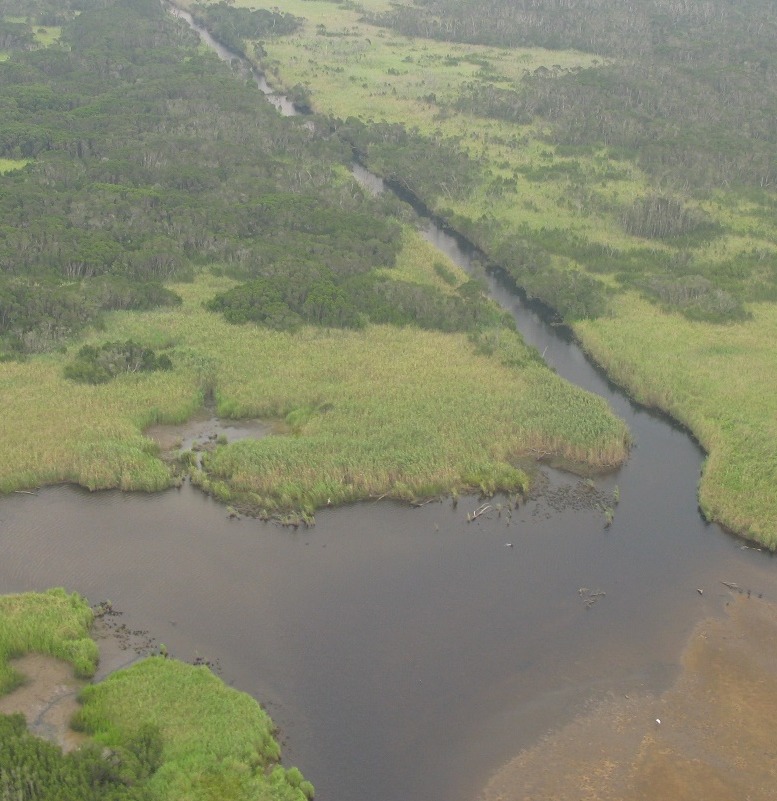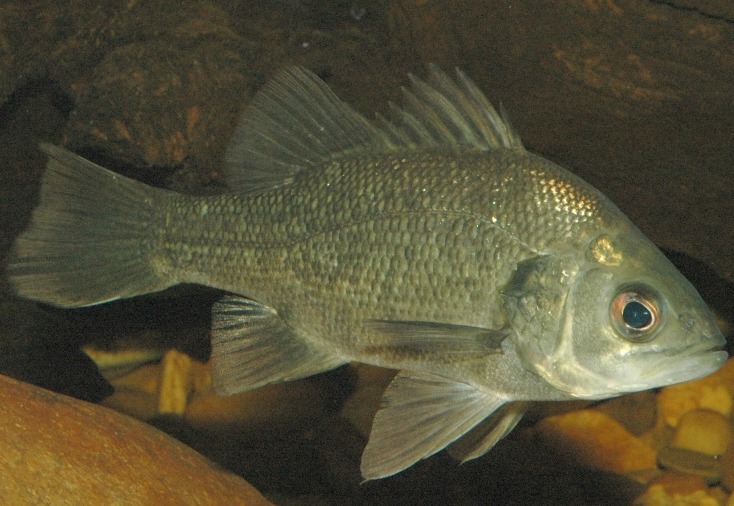Fish, and many of the species they rely on for food, have evolved to take advantage of natural flow regimes to complete important life-history functions such as migration, spawning, survival, and growth. Where flow regimes are inappropriate, fish populations, and the many species on which they depend, decline. The health of fish populations is therefore a good indicator of river health.
In 2013, ARI commenced research, funded by the East Gippsland Catchment Management Authority, to help inform and improve management of the lower Snowy River. As a first step in investigating the river’s health, a general fish survey, and an inventory of wetland values, threats and condition were undertaken.
The focus of the program then shifted to two large-bodied iconic species of fish, Australian Bass (Macquaria novemaculeata) and Estuary Perch (Percalates colonorum). Both species are long-lived (i.e., up to 50 years) and key predators within the lower Snowy River system. Therefore, changes in the numbers and recruitment success of these species reflect changes to river health over time. Knowledge gained during the research was used to determine what flows are crucial to the completion of the life-history of these species, informing environmental flow requirements.
These studies found that in the Snowy River:


- The population of Australian Bass is dominated by stocked fish.
- Little natural recruitment of Australian Bass has occurred in the system for more than 20 years.
- The population of Estuary Perch is dominated by fish greater than 16 years of age, suggesting poor recruitment of this species.
- Recruitment of Estuary Perch and Australian Bass is dependent on riverine high-flow events and cooler temperatures in winter and the spawning season (August–December).
- Without a considerable increase in the volume of environmental water delivered, present volumes are unlikely to substantially improve recruitment or growth of these species and populations are likely to continue to decline.
Further assessment of the use of environmental water for the benefit of Australian Bass and Estuary Perch in the Snowy River is underway using population models. Population models are useful for collating knowledge of a species and for testing hypotheses and comparing management options.
For further information on this work, see:
- Stoessel, D. et al. (2022) Assessing outcomes of environmental flows for estuary-dependent fish species using a novel stochastic population model approach. Estuaries and Coasts
- Stoessel, D. et al. (2018) Determinants of year class strength and growth of estuary perch Macquaria colonorum in a highly regulated system. Marine and Freshwater Research
- Stoessel, D. et al. (2018) Is climate change driving recruitment failure in Australian bass Macquaria novemaculeata in southern latitudes of the species' range. Marine and Freshwater Research.
Page last updated: 27/03/25